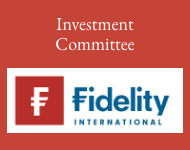Pharmaceutical giants Eli Lilly and Novo Nordisk have dominated headlines of late, with their blockbuster weight loss drugs, which are mainly used to treat obesity and type 2 diabetes, However, evidence has emerged that the drugs are also effective at treating a range of other health conditions, including cardiovascular diseases, Parkinson’s and Alzheimer’s.
As a result, Novo Nordisk has seen its share price soar 352% and Eli Lilly has jumped by 381% over the past year.
While Eli Lilly and Novo Nordisk are leading the way with drugs such as Wegovy, Ozempic, Zepbound and Mounjaro, a number of other companies are working on similar treatments. So what does this development mean for weight loss drugs?
Trevor Polischuk, partner of OrbiMed Capital, described the development as “enormous.”
“The combination of incredible efficacy, long-term safety and a massive addressable market in terms of global patient prevalence has created the largest therapeutic market opportunity I have ever seen in my career. As the newest data was emerging last year, we began to forecast a market potential of $100 billion by 2030. Now we are wondering if it could be $200 billion.”
Sam Morse, portfolio manager of Fidelity European Trust, expressed a similar sentiment. “Obesity is a global epidemic and one that is getting worse. The emergence of treatments for diabetes and obesity via weight loss drugs rather than managing symptoms through insulin shots has a wide variety of positive implications. Beyond weight loss, strong evidence is emerging that these drugs are also effective at treating other health issues such as cardiovascular disease and a whole variety of other innovative paths that could result in a much bigger end market than first anticipated.”
Investment managers agree that the growing market offers a number of opportunities for new players.
Woody Stileman, managing director, business development of RTW Investments, said: “Lily and Novo are the clear leaders currently but, given the market opportunity, many companies are developing alternatives. These companies are potentially developing more effective drugs, namely a better version of Lily’s Zepbound.”
Jamie Ross, portfolio manager of Henderson EuroTrust, commented: “This will be a market where first mover advantage and manufacturing scale and capabilities will matter. I see Novo Nordisk and Eli Lilly as likely to lead the market throughout the 2020s. However, as we approach the end of the decade, we are very likely to see new drugs on market from Roche, Viking, Amgen and Zealand Pharma amongst others. In addition to this dynamic, there will also be companies involved in the value chain who will benefit.”
Polischuk said: “Despite the recent launches of Wegovy and Zepbound, both Novo Nordisk and Eli Lilly have next generation products already in late-stage development and these developmental assets appear to be superior to what they are selling today.
“Competitors will also have to start now creating capacity to compete to even give them a fighting chance to take any meaningful share from Lilly and Novo in the future. The moat that Lilly and Novo have created is huge. And if I am wrong, I think the market is massive enough, especially beyond 2030, to have more than two entrants in this space and multiple competitors could enter and be successful with blockbuster products.”
However, the growth of the market does not come without potential risks. These include the entry of new players in the market causing greater-than-expected pricing pressure and unexpected long-term safety issues.
Ross said there are “three major remaining potential risks”.
“Novo Nordisk and Eli Lilly have a head start, but they will one day face competition. This competition could result in a still-rational market where pricing is robust and volumes grow strongly, but changing competitive dynamics could also result in aggressive price competition if the products competing are relatively undifferentiated from each other.
“Second, political pressure, especially in the US, or changing regulatory treatment, could also put unanticipated pressure on pricing. Finally, and this is unlikely given extensive testing and how much we now know about these drugs, there is always the risk with pharmaceutical products that long-term usage results in side-effects that were unanticipated,” he added.































